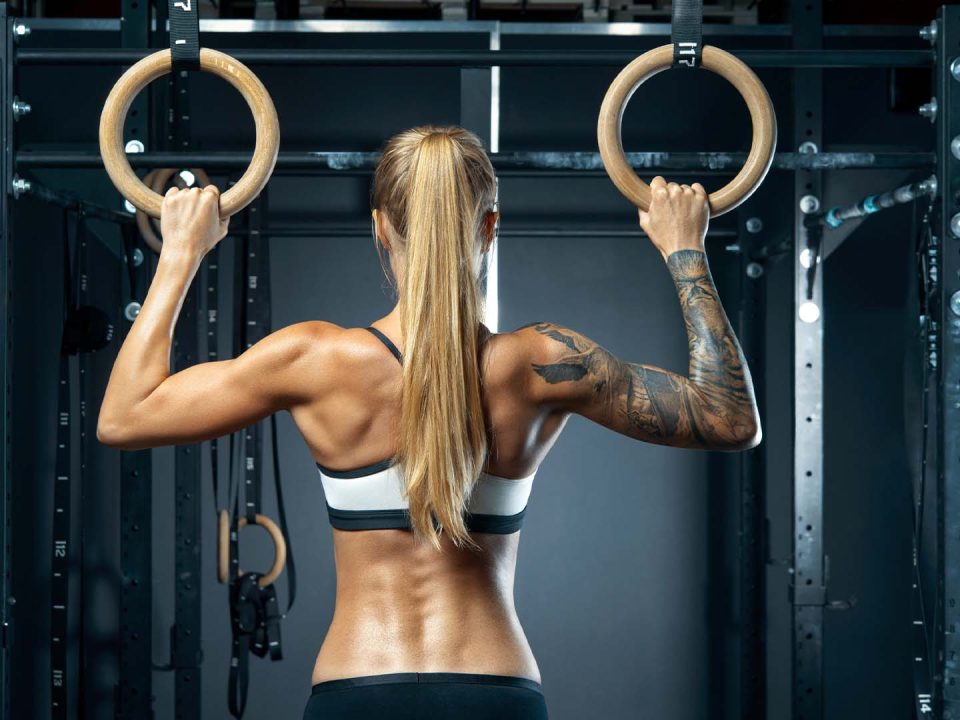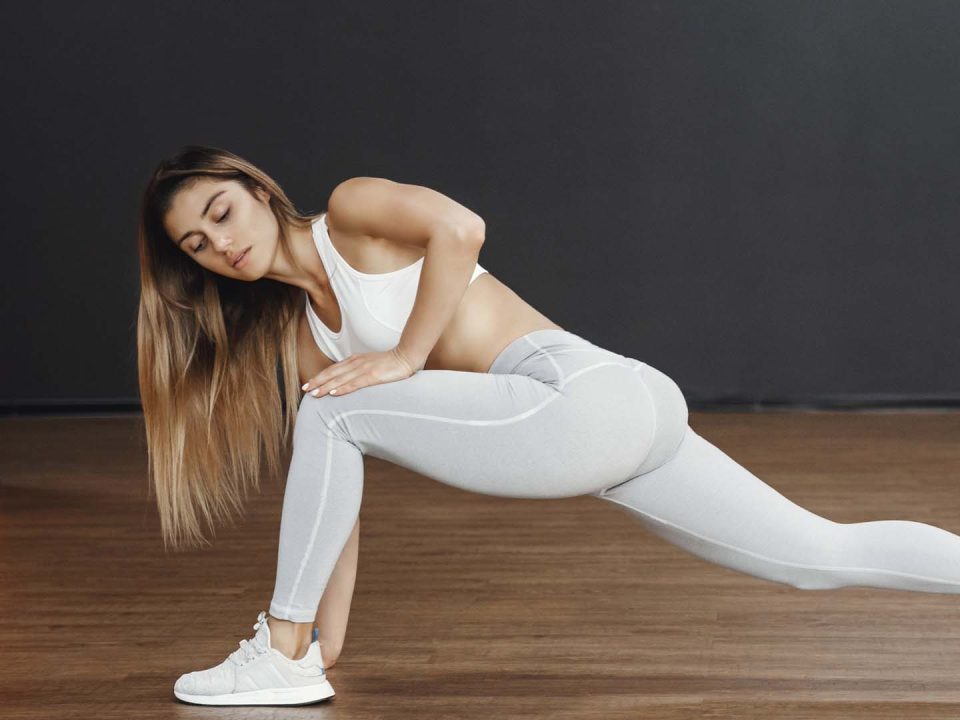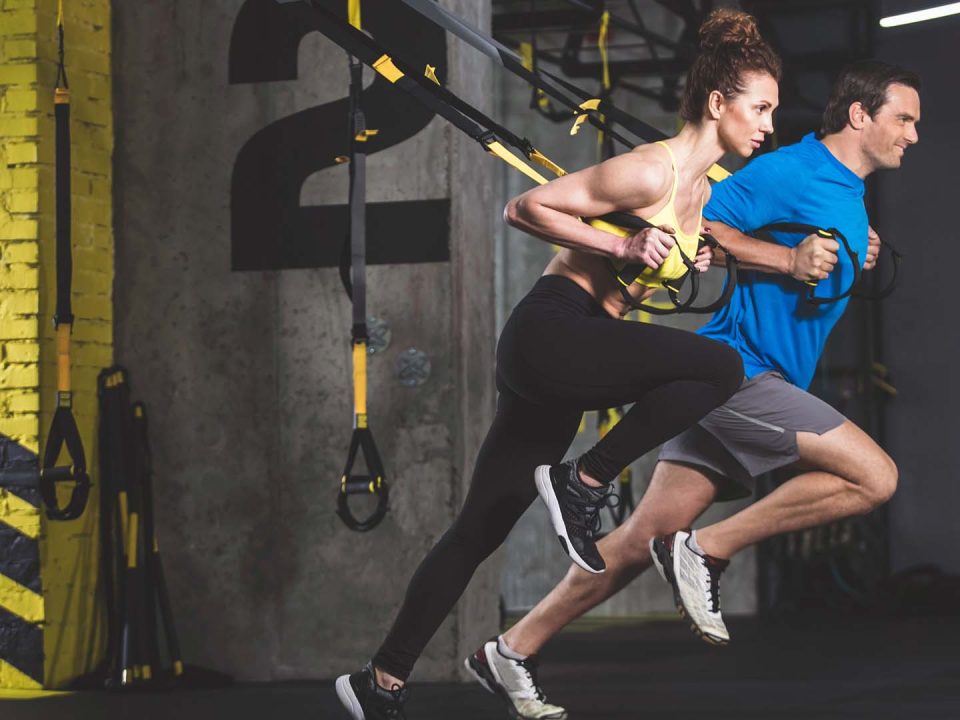Functional fitness workouts are taking the fitness world by storm. These innovative exercises are changing how we think about staying in shape. Unlike traditional gym routines, functional fitness focuses on movements that mimic everyday activities. This approach is proving to be a game-changer for people of all ages and fitness levels.
The concept of functional fitness isn't new, but it's gaining massive popularity. Why? Because it works. These workouts improve strength, flexibility, and balance – all crucial for daily life. Whether you're picking up groceries or playing with your kids, functional fitness prepares your body for real-world challenges.
Functional fitness has its roots in physical therapy and sports training. It evolved from the need to rehabilitate injuries and enhance athletic performance. Today, it's become a mainstream fitness trend. Gyms across the country are offering functional fitness classes, and home workout enthusiasts are embracing these practical exercises.
What sets functional fitness apart is its focus on multi-joint movements. Instead of isolating muscles, these workouts engage your entire body. This approach leads to better overall fitness and reduces the risk of injury. A study in the Journal of Strength and Conditioning Research found that functional fitness training significantly improved strength, endurance, and balance in participants.
Data Source: Journal of Strength and Conditioning Research
The beauty of functional fitness lies in its versatility. You don't need fancy equipment or a gym membership to get started. Many exercises use body weight or simple tools like resistance bands. This accessibility has contributed to its growing popularity, especially among home fitness enthusiasts.
As we look to the future, functional fitness is poised to play an even bigger role in health and wellness strategies. With its focus on practical, everyday movements, it's not just a workout – it's a lifestyle change that can benefit everyone.
Background
Functional fitness is reshaping how we approach exercise. This training method focuses on movements that mimic everyday activities. It's not about isolated muscle groups. Instead, it's about preparing your body for real-life challenges.
The roots of functional fitness trace back to physical therapy practices. Therapists used these exercises to help patients recover and perform daily tasks. Over time, fitness enthusiasts and trainers adopted these principles. They saw the value in training the body as an integrated system.
Unlike traditional workouts, functional fitness emphasizes multi-joint movements. It targets multiple muscle groups simultaneously. This approach improves overall strength, balance, and coordination. It's a stark contrast to machine-based exercises that isolate specific muscles.
Functional workouts often incorporate everyday objects or bodyweight exercises. This makes them accessible to people of all fitness levels. Whether you're lifting groceries or playing with your kids, functional fitness prepares you for life's physical demands.
The rise of functional fitness marks a shift in fitness philosophy. It's not just about looking good. It's about feeling good and performing better in daily life. This holistic approach to fitness is gaining traction among health-conscious individuals worldwide.
Data Source: Journal of Strength and Conditioning Research
The Science Behind Functional Fitness
Functional fitness isn't just a trendy workout – it's backed by solid science. Your body loves these exercises because they mimic real-life movements. Studies show that functional training boosts strength, flexibility, and balance better than traditional workouts.
A study in the Journal of Strength and Conditioning Research found that functional fitness significantly improved muscular strength and endurance. Participants saw a 57% increase in lower body strength and a 36% boost in upper body strength after just 12 weeks. That's impressive!
But it's not just about getting stronger. Functional fitness is a game-changer for injury prevention. These exercises strengthen the muscles and joints you use every day, making you less likely to get hurt doing simple tasks. Research shows that functional training can reduce injury risk by up to 30% compared to traditional weight lifting.
Balance and stability are key benefits too. A study of older adults found that functional fitness improved their balance by 42% after just 8 weeks. This is huge for preventing falls and maintaining independence as we age.
The best part? Functional fitness is great for your heart too. These workouts often involve full-body movements that get your heart pumping. Studies show they can improve cardiovascular health just as much as traditional cardio exercises, but with the added bonus of strength training.
So, whether you're looking to get stronger, prevent injuries, or just move better in everyday life, functional fitness has got you covered. It's not just a workout – it's a way to make your body work better for you.
Data Source: Journal of Strength and Conditioning Research
Key Components of Functional Fitness Workouts
Functional fitness workouts are built on movements that mimic real-life activities. These exercises help you build strength, flexibility, and balance for everyday tasks. Let's break down the key components that make these workouts so effective.
Squats are a cornerstone of functional fitness. They strengthen your legs and core, making it easier to sit down, stand up, and lift objects from the ground. Lunges are another crucial movement. They improve balance and leg strength, helping with activities like climbing stairs or picking up items.
Pushing and pulling exercises are essential too. Push-ups or chest presses simulate the action of pushing open a heavy door. Rows mimic the motion of pulling a lawnmower cord or opening a stuck drawer. These movements build upper body strength for daily tasks.
Core stability is the foundation of functional fitness. A strong core helps with everything from maintaining good posture to preventing back pain. Planks and rotational exercises are great for building core strength.
Remember, functional fitness isn't about isolating muscles. It's about training your body to work as a unit. This approach improves coordination and reduces injury risk in daily life.
Data Source: Journal of Strength and Conditioning Research
By focusing on these key components, you'll build a body that's ready for whatever life throws your way. Whether it's carrying groceries or playing with your kids, functional fitness has got you covered.
Functional Fitness for Different Age Groups
Functional fitness isn't one-size-fits-all. It's a versatile approach that benefits people of all ages, from seniors to elite athletes. Let's explore how functional fitness can be tailored to different age groups.
For Seniors
Functional fitness is a game-changer for seniors. It's all about staying independent and strong as you age. These workouts focus on everyday movements, making daily tasks easier and safer. Think of it as training for life!
For older adults, functional exercises can be modified to suit different fitness levels. Chair squats are a great example. They strengthen leg muscles, making it easier to stand up from a seated position. Wall push-ups help maintain upper body strength without the strain of floor push-ups.
Balance exercises are crucial too. Simple activities like standing on one foot or walking heel-to-toe can significantly reduce fall risks. These exercises don't require fancy equipment - just a sturdy chair or wall for support.
Many seniors have found success with functional fitness. Take Mary, 72, who started a functional fitness program six months ago. She now climbs stairs without getting winded and can play with her grandkids for longer periods. It's not just about physical gains; it's about quality of life.
Remember, it's never too late to start. Even small improvements in strength and balance can make a big difference in daily life. Always consult with a doctor before starting any new exercise program, especially if you have existing health conditions.
Data Source: BMC Geriatrics: The level of actual functional fitness of men from different living environments
For Athletes
Functional fitness is a game-changer for athletes. It's not just about lifting heavy weights or running fast. It's about moving better in your sport. High-intensity functional training (HIFT) is especially powerful. It boosts strength, speed, and endurance all at once.
HIFT mimics real sports movements. This makes it super effective. A study in the Journal of Sports Medicine showed big improvements in athletes' performance. They got stronger, faster, and more agile. Plus, their endurance shot up.
Pro athletes are catching on. LeBron James uses battle ropes and medicine ball slams. These functional exercises help his explosive power on the court. Serena Williams does TRX training to improve her core strength and balance. Even NFL teams are adding functional fitness to their routines.
But it's not just for the pros. College athletes are seeing benefits too. A study of college soccer players found that functional training improved their speed and agility more than traditional workouts.
Remember, functional fitness isn't about replacing sport-specific training. It's about enhancing it. By improving overall athleticism, it helps prevent injuries and boosts performance. That's why more coaches are making it a key part of their training programs.
Data Source: NCBI: Effects of HIFT on Physical Fitness and Sport-Specific Performance
Incorporating Functional Fitness at Home
Ready to start your functional fitness journey? Great news! You can begin right in your living room. No fancy gym equipment needed. Let's get you moving with some simple, effective exercises.
First up, bodyweight squats. These powerhouses work your legs and core. Stand with feet shoulder-width apart, lower your body as if sitting back into a chair, then push up to stand. Aim for 3 sets of 10 reps.
Next, try push-ups. Can't do a full push-up? No worries! Start with wall push-ups or on your knees. These build upper body strength and stability. Do what you can, even if it's just 5 at a time.
Planks are fantastic for core strength. Start with 15-second holds and work your way up. Remember, quality over quantity!
Want to kick it up a notch? Grab a resistance band. They're affordable and versatile. Use them for bicep curls, rows, or leg exercises. Start with 2-3 sets of 10-12 reps for each exercise.
For a more intense workout, consider a kettlebell. Start light – even 5 pounds can be challenging. Try kettlebell swings or goblet squats. These full-body movements really get your heart pumping.
Here's a sample routine to get you started:
- Bodyweight squats: 3 sets of 10
- Push-ups: 3 sets of 5-10
- Plank holds: 3 sets of 15-30 seconds
- Resistance band rows: 3 sets of 10
- Kettlebell swings: 3 sets of 10
Do this circuit 2-3 times a week. Listen to your body and adjust as needed. Remember, progress, not perfection!
Data Source: Mayo Clinic: Functional fitness training: Is it right for you?
The Future of Functional Fitness
Functional fitness is evolving rapidly, shaping the future of health and wellness. Virtual reality (VR) is set to revolutionize workouts, making them more engaging and immersive. Imagine squatting to dodge virtual obstacles or reaching for digital targets to improve flexibility. This tech integration could make functional fitness more appealing to younger generations.
Wearable technology is also advancing. Smart clothing with built-in sensors will provide real-time feedback on form and performance. This instant guidance can help prevent injuries and maximize workout efficiency. Artificial intelligence will analyze this data, offering personalized workout plans tailored to individual needs and progress.
The trend towards low-impact workouts is gaining momentum. Pilates and other gentle forms of functional fitness are becoming increasingly popular. This shift reflects a growing awareness of the importance of sustainable, long-term fitness approaches.
Looking ahead, functional fitness is likely to play a crucial role in preventive healthcare. Doctors may prescribe specific functional exercises as part of treatment plans. This holistic approach could reduce healthcare costs and improve overall quality of life.
As urban spaces evolve, we might see more outdoor fitness parks designed for functional workouts. These community spaces could foster social connections while promoting physical health. The future of functional fitness is not just about individual workouts – it's about creating healthier, more active communities.
Data Source: Axios: CrossFit is out: Low-impact workouts are in
Embracing Functional Fitness: A Path to Better Health and Daily Performance
Functional fitness workouts are more than just a passing trend. They're a game-changer in the world of exercise, offering a practical approach to staying fit and healthy. These workouts focus on movements that mimic everyday activities, making them incredibly effective for improving your overall quality of life.
By incorporating functional fitness into your routine, you're not just building muscle or burning calories. You're preparing your body for the challenges of daily life, from carrying groceries to playing with your kids. The beauty of functional fitness lies in its versatility. Whether you're a senior looking to maintain independence or an athlete aiming to boost performance, there's a functional workout tailored for you.
As we look to the future, functional fitness is set to play an even bigger role in our health and wellness strategies. With the rise of virtual reality and innovative workout equipment, we can expect even more engaging and effective functional fitness experiences. So why wait? Start incorporating these practical, life-enhancing exercises into your routine today. Your body will thank you for years to come.
Data Source: Axios: CrossFit is out: Low-impact workouts are in






